
Iranian Journal of Radiology
Scope & Guideline
Pioneering Knowledge in the Evolving Field of Radiology
Introduction
Aims and Scopes
- Imaging Techniques and Innovations:
The journal publishes research on various imaging modalities, including MRI, CT, ultrasound, and PET/CT, highlighting advancements in technology and methodology. - Clinical Applications and Outcomes:
A strong emphasis is placed on the clinical implications of imaging studies, including diagnostic accuracy, treatment planning, and patient outcomes. - Interventional Radiology:
The journal covers topics related to interventional techniques, including embolization, ablation, and other minimally invasive procedures, showing the evolving role of radiology in treatment. - Oncology Imaging:
A significant focus on oncological applications, including imaging for cancer diagnosis, staging, treatment response, and prognostication, reflecting the journal's commitment to cancer research. - Pediatric Radiology:
The journal includes studies specific to pediatric populations, addressing unique challenges and imaging findings in children, thus broadening the scope of radiological research. - Artificial Intelligence and Machine Learning:
Emerging themes include the application of AI and machine learning in imaging analysis, aiming to enhance diagnostic accuracy and efficiency.
Trending and Emerging
- COVID-19 Imaging Studies:
A significant increase in research related to imaging findings in COVID-19 patients indicates the pandemic's impact on the journal's focus, with studies exploring diagnostic challenges and outcomes. - Artificial Intelligence in Radiology:
There is a growing trend in the application of AI and machine learning techniques for image analysis, aiming to improve diagnostic accuracy and streamline workflows. - Advanced Imaging Techniques:
Emerging studies on advanced imaging modalities, such as dual-energy CT and elastography, suggest a trend towards exploring innovative technologies in clinical practice. - Interventional Radiology Advances:
An increased focus on interventional radiology, including novel therapeutic techniques and their efficacy, reflects a shift in the journal's emphasis on minimally invasive treatments. - Pediatric Imaging Innovations:
Research specifically targeting pediatric imaging challenges and innovations is on the rise, highlighting the unique needs of this population in radiological research.
Declining or Waning
- Traditional Radiology Techniques:
Research on conventional imaging techniques without advanced methodologies or technology is becoming less frequent, as the field shifts towards more innovative approaches. - Non-Oncological Imaging:
There has been a noticeable decline in studies focusing on non-oncological imaging applications, as the journal increasingly prioritizes cancer-related research. - Basic Radiological Education:
Papers centered around the basic education of radiology principles and practices are appearing less frequently, indicating a shift towards more advanced and specialized topics. - Invasive Diagnostic Procedures:
There is a reduction in studies focusing solely on invasive diagnostic procedures, as the emphasis has moved towards interventional techniques and their outcomes.
Similar Journals
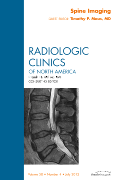
RADIOLOGIC CLINICS OF NORTH AMERICA
Illuminating the Path of Radiologic Excellence.Radiologic Clinics of North America, published by W B Saunders Co-Elsevier Inc, stands as a pivotal resource in the field of medical imaging and radiology. With a solid history dating back to 1963 and converging years extending to 2024, this journal has established itself as a reputable platform for original research, comprehensive reviews, and insightful discussions that advance the knowledge and practice of radiology, nuclear medicine, and imaging. Holding a Q2 classification in both the miscellaneous medicine and radiology categories and positioned within the 56th percentile among its peers, its contributions are vital for both academic research and clinical applications. Although it does not offer open access, the journal remains accessible through institutional subscriptions and is a must-read for researchers, healthcare professionals, and students keen on the latest developments in radiological practices. With a dedicated editorial board and a commitment to the highest academic standards, Radiologic Clinics of North America continues to shape the future of the medical imaging field.
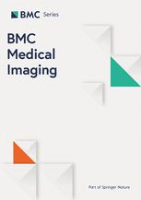
BMC MEDICAL IMAGING
Innovating Diagnostic Practices Through Open Access Research.BMC Medical Imaging is a premier open-access journal dedicated to advancing the field of radiology, nuclear medicine, and imaging technologies. Published by BMC in the United Kingdom, this journal serves as a vital resource for researchers, clinicians, and students, fostering a collaborative environment for sharing innovative findings and methodologies in medical imaging. With a commendable impact factor and an impressive Scopus ranking within the top 35% of its category, BMC Medical Imaging provides a platform for high-quality research to be disseminated widely and freely since its inception in 2001. The journal aims to cover a diverse array of topics, from advanced imaging techniques to their clinical applications, enhancing the understanding and effectiveness of diagnostic practices. By contributing to the body of knowledge and facilitating open access to research, BMC Medical Imaging plays a pivotal role in shaping the future of medical imaging and improving patient care.

Journal of the Belgian Society of Radiology
Pioneering Innovations in Imaging and Nuclear MedicineThe Journal of the Belgian Society of Radiology, published by UBIQUITY PRESS LTD, is a pivotal resource in the field of radiology, nuclear medicine, and imaging. With an ISSN of 2514-8281 and E-ISSN of 2514-8281, this open access journal has been dedicated to fostering the dissemination of high-quality research since its establishment in 2010. Distributed from the United Kingdom, it offers a platform for innovative studies, case reports, and reviews that contribute to the advancement of radiological sciences. Despite its current Q4 category ranking within Scopus, the journal plays a critical role in sharing essential findings with a community of over 1,200 professionals and students eager to stay abreast of emerging trends and technological advancements in imaging. By enabling unrestricted access to its publications, the journal encourages collaborative research and knowledge exchange that transcends geographic boundaries, solidifying its importance for both established researchers and emerging scholars in the discipline.

Insights into Imaging
Connecting Researchers and Practitioners in ImagingInsights into Imaging is a prominent open-access journal published by SPRINGER WIEN, specializing in the dynamic fields of radiology, nuclear medicine, and imaging, with its ISSN 1869-4101. Established in 2012, the journal has established itself as a leading platform for disseminating high-quality research and innovative findings, currently holding a prestigious Q1 ranking in its category as of 2023. With an impressive Scopus rank of #42 out of 333 in the medicine discipline, the journal is positioned in the 87th percentile, reflecting its significance and influence in the academic community. Based in Germany, Insights into Imaging not only provides unrestricted access to research but also aims to bridge the gap between scientific inquiry and clinical application, making it an essential resource for researchers, professionals, and students engaged in advancing imaging technologies and practices. The journal’s commitment to fostering knowledge exchange ensures that it remains a critical contributor to the evolving landscape of medical imaging, with articles available from 2012 through 2024.
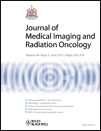
Journal of Medical Imaging and Radiation Oncology
Fostering Innovation in Imaging for Enhanced Cancer CareJournal of Medical Imaging and Radiation Oncology, published by WILEY, is a pivotal resource in the fields of oncology and medical imaging. With an impact factor reflective of its commitment to advancing research, the journal has maintained a robust reputation since its inception in 2008 and continues to thrive through 2024. It is indexed with an insightful ranking, with a Q2 classification in Radiology, Nuclear Medicine and Imaging, affirming its importance in these disciplines. This journal not only serves as an open access platform, allowing extensive reach and accessibility, but also fosters a scholarly community dedicated to the innovation of imaging techniques and radiation oncology practices. As a key player in disseminating crucial findings and advancements, it appeals to researchers, clinicians, and students who aim to contribute to the evolving landscape of medical imaging and cancer treatment methodologies. The journal is based in Australia, at 111 River St, Hoboken, NJ, and invites submissions that push the boundaries of current knowledge in this critical area of healthcare.

Hong Kong Journal of Radiology
Bridging Global Knowledge in Radiology and Nuclear MedicineHong Kong Journal of Radiology, an esteemed publication of the Hong Kong Academy of Medicine Press, serves as a vital platform for disseminating innovative research in the field of radiology, nuclear medicine, and imaging. Established in 2011 and operating under an Open Access model since 2018, this journal not only promotes the sharing of knowledge but also enhances global accessibility to cutting-edge studies. With its ISSN 2223-6619 and E-ISSN 2307-4620, the journal strives to engage a diverse audience ranging from experienced professionals to aspiring scholars in the medical imaging domain. Despite its current ranking in the Q4 quartile of the Scopus category for radiology, the journal is committed to improving its standing by featuring high-quality research that addresses pressing issues in the field. The journal's convergence from 2011 to 2024 reflects its ongoing dedication to fostering academic excellence and encouraging collaborative discourse among researchers and practitioners globally. Located in Hong Kong, the journal plays a significant role in shaping the future of radiology education and practice in China and beyond.
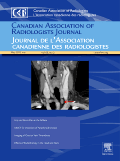
CANADIAN ASSOCIATION OF RADIOLOGISTS JOURNAL-JOURNAL DE L ASSOCIATION CANADIENNE DES RADIOLOGISTES
Advancing Radiology: Insightful Research for Tomorrow's InnovatorsCanadian Association of Radiologists Journal - Journal de l'Association Canadienne des Radiologistes, published by SAGE Publications Inc, stands as a vital resource in the realms of Radiology and Medicine. With an ISSN of 0846-5371 and an E-ISSN of 1488-2361, this esteemed journal offers insightful research articles and reviews that contribute to the advancement and practice of radiology, benefiting both seasoned professionals and emerging scholars. Holding a commendable Q2 ranking in both the fields of Medicine (miscellaneous) and Radiology, Nuclear Medicine and Imaging, the journal is recognized for its impactful publications, positioning its content within the top 40% of global research outputs. Since its inception in 1973 and continuing through to 2024, it has consistently provided a platform for cutting-edge research and clinical innovations, facilitating knowledge transfer among practitioners and educators. The journal’s significant influence is evidenced by its Scopus rank of #67 out of 333 in its category, placing it in the 80th percentile of academic excellence. Although it does not offer open access, its contributions are critical for advancing the field, making it essential reading for all those invested in the evolution of radiological sciences.

European Journal of Radiology Open
Disseminating Cutting-Edge Findings in ImagingThe European Journal of Radiology Open, published by Elsevier, has established itself as a pivotal platform for disseminating high-quality research in the field of radiology, nuclear medicine, and imaging since its inception in 2014. This open access journal, holding a commendable Q2 ranking in the esteemed 2023 Scopus categorization, seeks to foster a collaborative environment where researchers, professionals, and students can share innovative findings and advancements. Operating under the E-ISSN 2352-0477, this journal contributes to the broader scientific discourse with a commitment to accessibility and transparency, ensuring that cutting-edge research is available to a global audience. The journal's dual focus on rigorous peer review and rapid publication processes underscores its importance within the academic community, aiming to empower professionals with the latest insights in the dynamic landscape of medical imaging.
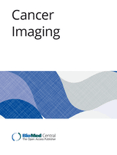
CANCER IMAGING
Illuminating Innovations in Oncology ImagingCANCER IMAGING, published by BMC, stands as a leading open-access journal in the realms of oncology and medical imaging, significantly contributing to the advancement of cancer research since its inception in 2000. With an impressive impact across multiple domains—most notably ranking Q1 in prestigious categories such as Medicine (miscellaneous), Oncology, and Radiology—this journal ensures high visibility and influence within the academic community. As of 2023, it is recognized in various Scopus rankings, securing top positions in the fields of Radiology, Nuclear Medicine, and Imaging, alongside Radiological and Ultrasound Technology. The journal's commitment to open-access publication, adopted in 2014, enhances accessibility for researchers, healthcare professionals, and students alike, fostering an inclusive environment for sharing critical advancements and innovative methodologies in cancer imaging. Set in the vibrant landscape of the United Kingdom, CANCER IMAGING continues to play a vital role in elucidating the complexities of cancer diagnostics and treatment, establishing itself as an essential resource for those pursuing excellence in cancer care and research.
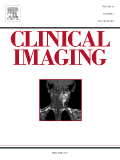
Clinical Imaging
Advancing the Future of Diagnostic ImagingClinical Imaging, published by Elsevier Science Inc, is a renowned journal dedicated to the field of radiology, nuclear medicine, and imaging. With an ISSN of 0899-7071 and an E-ISSN of 1873-4499, this esteemed publication has established its significance in advancing imaging science since its inception in 1989 and continues to make impactful contributions to the discipline through 2024. The journal holds a prestigious Q2 ranking in the category of Radiology, Nuclear Medicine, and Imaging, reflecting its critical role in bridging research and clinical practice. Currently ranked #113 out of 333 by Scopus, with a notable 66th percentile, it offers a platform for disseminating high-quality research, reviews, and case studies that inspire innovation and enhance imaging techniques. Although it primarily functions as a subscription-based journal, it remains dedicated to accessibility and the dissemination of pivotal findings that inform both academia and clinical settings. Clinical Imaging is essential for researchers, professionals, and students alike, offering insights that shape the future of diagnostic imaging.